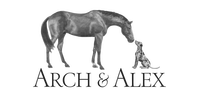CUSTOMER SERVICE
|
© COPYRIGHT ARCH & ALEX PTY LTD
Logo artwork by Lyn Beaumont |
CUSTOMER SERVICE
|
© COPYRIGHT ARCH & ALEX PTY LTD
Logo artwork by Lyn Beaumont |
